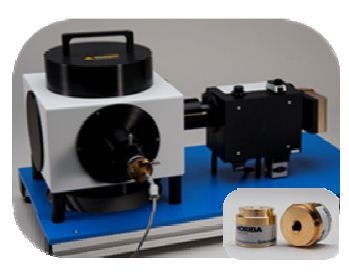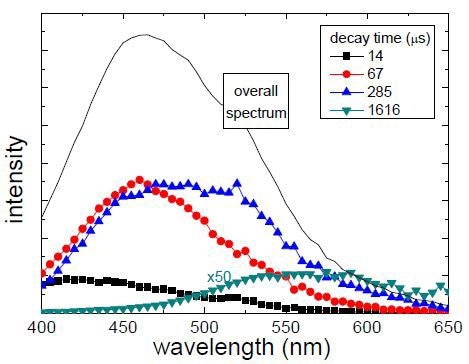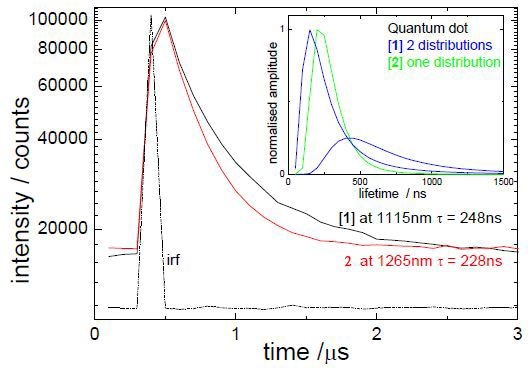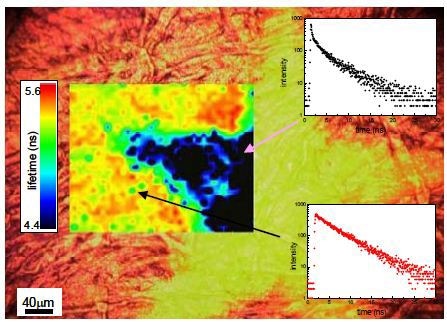Sponsored by HORIBADec 16 2013
Using security features such as luminescent inks, has considerably increased in an attempt to prevent fraud and counterfeiting of materials and goods. Applications of these inks include branded goods, bank notes, drug packaging and food security. Security inks may either show overtly or be covert, with the latter driving the luminescence further from the visible spectral region into the ultraviolet (UV) and near infrared (NIR) regions. In these regions light sources are not so common. The use of the luminescence lifetime on top of the wavelength signature adds an extra parameter that can be interrogated.
The security inks need to be machine readable as well as be visible to the eye under the right form of illumination. The need for more concealed security features, in addition to overt ones drives the push towards using more extreme wavelengths for luminescence. Security inks also need to be light stable and, in addition to the use of organic dyes, this has led to the incorporation of lanthanides and nanoparticles / quantum dots into flexographic inks.
Pharmaceuticals and branded goods also benefit from their use to help monitor for counterfeiting. Another area of security where a more overt colorimetric indicator can be used is food security, where sensing the presence of oxygen is a principal goal, the area of intelligent packaging. This article shows a number of examples linked to the measurement of different security inks using a range of equipment, with excitation ranging from the UV to NIR. Using time-resolved fluorescence microscopy, spatial information is also obtained. The lifetimes recovered span from nanoseconds (ns) to milliseconds (ms).
Time-Resolved Study of Security Dye Luminescence using UV LED Excitation on a HORIBA DeltaPro
Printed paper was used to make measurements with representative banknote inks, mounted on a front face sample holder using a SpectraLED-260 for excitation. This long pulse LED emits at 260nm was employed on a DeltPro- 01 equipped with a TBX detector as shown in Figure 1.

Figure 1. DeltaPro-01 with, inset, SpectraLED sources
Along with measuring the time-resolved luminescence decay, having a monochromator enabled the DeltaPro to measure time-resolved emission spectra. After global analysis using DAS6 software, this enabled the plot of the decay associated spectra to be made as shown in Figure 2.

Figure 2. Decay associated spectra with S-260 excitation
Figure 2 shows that the decay of inks on the printed sample is complex, but the DeltaPro measurement allows both spectral and time-resolved information to be obtained in one automated measurement.
Ultima NIR Measurement of a Quantum Dot Containing Flexographic Ink
These measurements involved NanoLED laser excitation using a wavelength of 980nm and a near infrared detector. In this case the Ultima was equipped with a MCS card enabling a resolution of 100ns/pt. Note that data with equivalent time resolution can also be acquired using a DeltaPro. The emission of two liquid ink samples containing different quantum dots was measured at both 1115nm and 1265nm.
The decays are shown in Figure 3.

Figure 3. Luminescence decays for two quantum dot containing ink samples, also showing average lifetimes and instrumental response (irf). Inset distribution analysis for the two samples
The decays were analysed using DAS6 and found to be multiexponential (3 components in the case of [1] and 2 for [2]). In a different approach, the data was fitted (using DAS6) to a distribution function. The outcome is illustrated as an inset in Figure 3. This shows the potential for the use of these quantum dots, with their added stability over organic dyes in this wavelength region.
Spatial and Time-Resolved Information of Ink on a Banknote Measured using a DynaMyc
At times the ability to obtain spatial information concerning the location of the ink is required. An obvious method to acquire this is the use of time-resolved fluorescence microscopy. An example taken with a DynaMyc is given in Fig. 4. This shows a pattern on a bank note, with a lifetime image superimposed on a camera image. Representative time-resolved decays for two different regions are also shown. The fluorescence decays were analyzed as a sum of two exponential decays and the average lifetime calculated.

Figure 4. Fluorescence lifetime image overlaid on a camera image of a patterned area of a banknote. Representative decay profiles are also shown
Summary
This note shows how several pieces of instrumentation covering different luminescent time scales and techniques are useful in the characterization of various security inks, offering value information to help introduce anticounterfeiting measures.

This information has been sourced, reviewed and adapted from materials provided by HORIBA.
For more information on this source, please visit HORIBA.